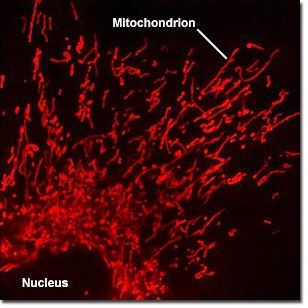Image Galleries
Featured Article
 Electron Multiplying Charge-Coupled Devices (EMCCDs)
Electron Multiplying Charge-Coupled Devices (EMCCDs)
By incorporating on-chip multiplication gain, the electron multiplying CCD achieves, in an all solid-state sensor, the single-photon detection sensitivity typical of intensified or electron-bombarded CCDs at much lower cost and without compromising the quantum efficiency and resolution characteristics of the conventional CCD structure.
Product Information
Digital Video Gallery
Observing Mitochondria in Epithelial Cells

In the digital videos presented in this section, normal opossum kidney epithelial cells (OK line) are expressing dimeric Katushka fluorescent protein fused to the mitochondrial targeting signal from subunit VIII of human cytochrome C oxidase. Katushka is a very bright derivative of TurboRFP and retains the dimeric character of its parent. When fused to an appropriate mitochondrial targeting signal, however, Katushka fluorescent protein is able to localize to the mitochondria in human and animal cell lines.
Video 1 - Run Time: 15 Seconds - The concentration of mitochondria in the cell featured in this video is high enough that they are visible even from behind the nucleus and a large vacuole. Choose a playback version: Streaming Video (7.5 MB), Progressive Download (7.5 MB), and MPEG Download (71 MB)
Video 2 - Run Time: 15 Seconds - Mitochondria are densely clumped around the nucleus of an OK cell, spreading out and becoming more sparse toward the edges. Choose a playback version: Streaming Video (7.5 MB), Progressive Download (7.5 MB), and MPEG Download (71 MB)






